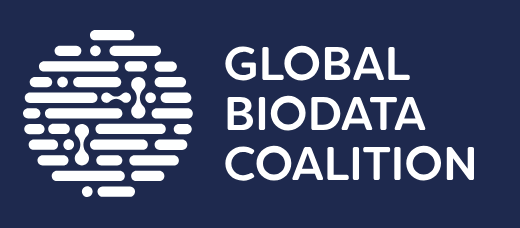The name of this superfamily has been modified since the most recent official CATH+ release (v4_4_0). At the point of the last release, this superfamily was: waiting to be named.
FunFam 613: Nuclear pore complex subunit
Please note: GO annotations are assigned to the full protein sequence rather than individual protein domains. Since a given protein can contain multiple domains, it is possible that some of the annotations below come from additional domains that occur in the same protein, but have been classified elsewhere in CATH.
There are 4 GO terms relating to "molecular function"
The search results have been sorted with the annotations that are found most frequently at the top of the
list. The results can be filtered by typing text into the search box at the top of the table.
| GO Term | Annotations | Evidence |
|---|---|---|
|
Single-stranded DNA binding GO:0003697
Interacting selectively and non-covalently with single-stranded DNA.
|
2 | Q03790 (/IDA) Q05166 (/IDA) |
|
Protein binding GO:0005515
Interacting selectively and non-covalently with any protein or protein complex (a complex of two or more proteins that may include other nonprotein molecules).
|
2 | Q03790 (/IPI) Q05166 (/IPI) |
|
Phospholipid binding GO:0005543
Interacting selectively and non-covalently with phospholipids, a class of lipids containing phosphoric acid as a mono- or diester.
|
2 | Q03790 (/IDA) Q05166 (/IDA) |
|
Structural constituent of nuclear pore GO:0017056
The action of a molecule that contributes to the structural integrity of the nuclear pore complex, a protein-lined channel in the nuclear envelope that allows the transfer of macromolecules.
|
2 | Q03790 (/IPI) Q05166 (/IPI) |
There are 13 GO terms relating to "biological process"
The search results have been sorted with the annotations that are found most frequently at the top of the
list. The results can be filtered by typing text into the search box at the top of the table.
| GO Term | Annotations | Evidence |
|---|---|---|
|
Nuclear pore organization GO:0006999
A process that is carried out at the cellular level which results in the assembly, arrangement of constituent parts, or disassembly of the nuclear pore.
|
2 | Q03790 (/IGI) Q05166 (/IGI) |
|
Protein import into nucleus GO:0006606
The directed movement of a protein from the cytoplasm to the nucleus.
|
1 | Q03790 (/IGI) |
|
NLS-bearing protein import into nucleus GO:0006607
The directed movement of a protein bearing a nuclear localization signal (NLS) from the cytoplasm into the nucleus, across the nuclear envelope.
|
1 | Q03790 (/IGI) |
|
NLS-bearing protein import into nucleus GO:0006607
The directed movement of a protein bearing a nuclear localization signal (NLS) from the cytoplasm into the nucleus, across the nuclear envelope.
|
1 | Q03790 (/IMP) |
|
Regulation of mitotic nuclear division GO:0007088
Any process that modulates the frequency, rate or extent of mitosis.
|
1 | Q03790 (/IMP) |
|
Regulation of mitotic nuclear division GO:0007088
Any process that modulates the frequency, rate or extent of mitosis.
|
1 | Q03790 (/IPI) |
|
MRNA export from nucleus in response to heat stress GO:0031990
The directed movement of mRNA from the nucleus to the cytoplasm during a heat stimulus, a temperature stimulus above the optimal temperature for the organism; in particular, a process that enables an organism withstand exposure to temperatures that would otherwise lethally impair poly(A)+ mRNA-nucleus export.
|
1 | Q05166 (/IMP) |
|
Protein localization to kinetochore GO:0034501
Any process in which a protein is transported to, or maintained at, the kinetochore.
|
1 | Q03790 (/IMP) |
|
Positive regulation of transcription, DNA-templated GO:0045893
Any process that activates or increases the frequency, rate or extent of cellular DNA-templated transcription.
|
1 | Q03790 (/IDA) |
|
Positive regulation of transcription, DNA-templated GO:0045893
Any process that activates or increases the frequency, rate or extent of cellular DNA-templated transcription.
|
1 | Q03790 (/IGI) |
|
Regulation of protein desumoylation GO:0060188
Any process that modulates the frequency, rate or extent of protein desumoylation. Protein desumoylation is the process in which a SUMO protein (small ubiquitin-related modifier) is cleaved from its target protein.
|
1 | Q03790 (/IMP) |
|
Regulation of protein desumoylation GO:0060188
Any process that modulates the frequency, rate or extent of protein desumoylation. Protein desumoylation is the process in which a SUMO protein (small ubiquitin-related modifier) is cleaved from its target protein.
|
1 | Q03790 (/IPI) |
|
Response to spindle checkpoint signaling GO:0072417
A process that occurs in response to signals generated as a result of spindle checkpoint signaling.
|
1 | Q03790 (/IMP) |
There are 3 GO terms relating to "cellular component"
The search results have been sorted with the annotations that are found most frequently at the top of the
list. The results can be filtered by typing text into the search box at the top of the table.
| GO Term | Annotations | Evidence |
|---|---|---|
|
Nuclear pore GO:0005643
Any of the numerous similar discrete openings in the nuclear envelope of a eukaryotic cell, where the inner and outer nuclear membranes are joined.
|
2 | Q03790 (/IDA) Q05166 (/IDA) |
|
Nuclear pore central transport channel GO:0044613
The central substructure of the nuclear pore complex (NPC), through which nucleocytoplasmic transport of RNAs, proteins and small molecules occurs. The central transport channel is filled with FG-nucleoporins, which form a selective barrier and provide a series of binding sites for transporter proteins. Characterized S. cerevisiae FG-nucleoporins include Nup159p, Nup145Np, Nup116p, Nup100p, Nsp1p, Nup57p, Nup49p, Nup42p, Nup53p, Nup59p/Asm4p, Nup60p and Nup1. Characterized vertebrate FG-nucleoporins include Nup214, Nup98, Nup62, Nup54, Nup58/45, NLP1, and Nup153.
|
2 | Q03790 (/IDA) Q05166 (/IDA) |
|
Nuclear pore nuclear basket GO:0044615
A filamentous, cage-like assembly on the nuclear face of the nuclear pore complex (NPC). In S. cerevisiae, Mlp1p and Mlp2p are two major components of the NPC nuclear basket. In vertebrates, Tpr is a major component.
|
1 | Q03790 (/IDA) |
